- Home
- Simon Winchester
Atlantic Page 8
Atlantic Read online
Page 8
This was the clue that concluded a decades-long search. Ever since the Icelandic sagas had mentioned Vinland, Americans, and Canadians, mainly in the northeast, had been scouring their properties and their neighborhoods for anything that might suggest a onetime Norse settlement—for who would not wish to know that European feet had first been placed on their front garden, or that Nordic sailors had walked first on their own village beach? Runestones—all of them fakes—popped up in unlikely places like Minnesota and Oklahoma; a Nordic statue was uncovered beside Thoreau’s Merrimack River; the unusual color and height of the Narragansett Indians of Rhode Island was bruited as evidence that Norsemen had once set up a colony near Providence; and a wealthy Harvard chemistry professor named Eben Horsford13 claimed to have found the site of Leif Eriksson’s house in Cambridge, no less, beside a traffic light near Mount Auburn Hospital. He, along with a violinist named Ole Bull, raised funds to have a statue raised to the Nordic settler on Commonwealth Avenue in Boston. It still stands.
Despite all this nonsense, in the mid-1950s a Norwegian scholar of Viking history, Helge Ingstad, felt certain from his studies of the Skálholt Map that he knew where Leif Eriksson’s Vinland must have been. It was, he surmised, in the Canadian province of Newfoundland, and somewhere on great north-running peninsula, under the mountains of the Long Range, which lies on the island’s western side. Armed with this educated hunch, he began to make annual excursions to Canada, asking repeated questions of villagers and farmers in the outports between the town of Stephenville Crossing and the tiny inlets nearly three hundred miles north, on the shores of the Strait of Belle Isle.
One day in 1960, he and his daughter Benedicte sailed on their small yacht up to the tiny settlement of L’Anse aux Meadows, at the very northern tip of the island. There Ingstad met a local fisherman, George Decker, and asked him the question he felt he had asked a thousand times. Were there by any chance any ruins nearby, which might have been from a settlement of Norsemen?
Decker replied with a studied casualness. “Yeah, I know where there are some old ruins. Follow me.” He took a stunned Ingstad over to a field of cloudberries, wild iris, and gale-stunted pines, to where there stood almost a dozen very large grass-covered mounds, all set on a slight slope that ran down to Epaves Bay. Decker watched as his visitor gulped with amazement. He was delighted that the Norwegian was so astonished, he said later, but often wondered to himself why it had taken outsiders so long to get around to asking.
In that instant, the world—at least, the world of archaeologists—shifted on its axis. Once the diggings began, history was rewritten, profoundly and at a stroke. L’Anse aux Meadows—the words are a linguistic contortion of the French for The Bay of the Jellyfish—became in short order the most famous archaeological site in North America. With barely a cirrus cloud of doubt, this spot is now acknowledged as the base of operations for the Norsemen who settled and lived and created homes for themselves on the far side of the sea. Quite possibly—quite probably, in fact—L’Anse aux Meadows was the Vinland settlement itself. Leif Eriksson, his kin and his kith, provably and finally had now joined that select group of men and women who had been first to cross the Atlantic Ocean. The excavations continued. They were conducted by Ingstad and his wife over the next seven years, the pair reburying the site each winter, for protection against both the ferocious snowstorms and the destructive grinding of icebergs washed up on the beach.
Formal public announcement of the find was made in the pages of the National Geographic magazine in November 1964. It was revealed that the Norsemen had built themselves a total of three large stone-and-sod houses and five workshops, one of which clearly was a smithy. Iron nails had been found, and spindles, and a copper pin used for decoration. Specialists working with the University of Toronto’s main subatomic particle accelerator and at the Radiological Dating Laboratory in Trondheim both brought the very latest technologies to bear on the various samples—mainly charcoal from the smithy furnace—and came up with agreement that everything at L’Anse aux Meadows had been created between 975 and 1020 A.D. The sagas’ date for the Vinland settlement—depending how the stories were read—was 1001 A.D. It was like the last piece of a jigsaw puzzle, snapping itself neatly into place, locked solid.
At the far northern tip of Newfoundland, these sod-covered huts, discovered in 1960 but estimated to date from the beginning of the eleventh century, offered the first concrete evidence of early Norse settlement in the Americas.
The excavations continued until 1976, after the Canadian parks service had taken over from the then quite elderly Ingstads. They found cooking pits, bathhouses, and an enclosure for keeping cattle. Rotted remains of butternuts were also discovered—and since agricultural climatologists are certain that in the first millennium, no butternut tree could have grown north of New Brunswick, it is assumed that the visitors must have taken their knarrer and penetrated even farther south. It is also assumed that they sailed southwestward from their camp, crossed the notoriously bumpy waters of the St. Lawrence estuary to the American continent, eventually landing on Gaspé or on Cape Breton Island and then heading either upriver or even overland to seek richer pastures and tastier crops. (Since New Brunswick is also the northerly limit for the appearance of wild grapes, it offers some additional credence to the Norse use of the name Vinland—Wine Land.)
A second site, smaller in extent than L’Anse aux Meadows, may have been found more recently: archaeologists working at a site on the southern end of Baffin Island in 2000 say that the discovery of sod-and-stone walls, a whalebone spade, and a crude form of a house drainage system all suggest the work of Norsemen. Rival scholars deride this as wishful thinking and insist it is no more than an indication of the gathering sophistication of the paleo-Inuit of the Dorset culture who are known to have occupied this corner of the Canadian subarctic. Those who support the Norse claim say it suggests their Viking-inspired knarrer were shuttling between sites in Newfoundland and Labrador and the Hudson Bay islands for far longer than imagined, and that the notion that all the Europeans scuttled back to Greenland or Norway and left Canada alone for centuries is myopic and wrongheaded.
But one further intriguing morsel of history remains. In 1004 a child was born in Vinland. It was a boy, named Snorri, the child of Gudrid and Thorfin Karlsefni. According to an Icelandic custom that continues to this day, the lad was given a surname derived from his father’s first name, thus Snorri Thorfinsson. He was, undoubtedly, the first European child to be born on the American continent. Since he traveled back to Greenland with his parents if and when the L’Anse aux Meadows outpost was eventually closed down, in around 1008, he most probably died there, or in Europe—unaware to the last that he would in time come to be remembered as Canada’s first European native son.
8. REPUTATIONS
How should history regard this entire Nordic Atlantic venture, when compared with the ocean crossing much more famously undertaken five centuries later, by Christopher Columbus?
It certainly seems true, so far as archaeology and literature indicate, that no other sailor crossed the ocean with success14 in the nearly five centuries between the Erikssons’ ventures over the Labrador Sea in 1001 and the self-styled Admiral of the Ocean Sea’s six-week journey from Andalusia to San Salvador island in the late summer of 1492. But even though these expeditions had precisely the same initial outcome, that of firmly placing European men onto American shores, there are many differences between the two voyages.
It is 4,500 miles from Bergen to Newfoundland, but Leif Eriksson did not have to travel nearly so far, because he first came to Newfoundland only from Greenland, less than a thousand miles away. Not that this short journey was exactly a picnic. In winter, though the sea does not freeze, the weather is dire, the sea thick with ice, packs and bergs and the much more dangerous half-submerged chunks known unimaginatively as bergy bits. The winds Eriksson encountered were exceptionally fierce and almost always came from the west or the northwest, contrary to t
he Norsemen’s intended direction. These gales were so fierce the tiny knarrer would have had to lay-to for hours, sometimes for days at a time. Masts broke, sails ripped, everyone aboard was drenched, chill and miserable. Even in summertime matters were little better: drenching fogs and the endless high-latitude daylight—which mightily complicated sleep—made for unhappy navigation.
When the party finally reached land—which was pocketed with settlements of the Dorset people—they made bases for themselves, peaceably and with a recognized veneer of civilized behavior (these were Norsemen, remember—not Vikings). They brought women with them on the comparatively short voyage across the Labrador Sea; they settled into routines of amiable domesticity; and they got on reasonably well, so far as one can tell, with the local peoples, even though their word, skraelinger, described them as barbarians (mainly since the natives wore animals skins, not clothes of woven wool, as did the Europeans). The Norsemen refused to give the skraelinger any weapons: the sagas say they bartered with them, employing as trade goods not beads or useless trinkets, but milk, which the Eskimos appeared to like.
All told, the Norsemen’s brief stay in America seems to have been motivated by curiosity, marked by maritime courage, and sustained with a degree of apparent civility. The much better-known voyage of Columbus, by contrast, was motivated by a combination of commercial ambition, a growing Spanish exasperation at the blockage of land trade routes to the east by the Ottoman Turks (and the thought that this East could be reached instead by heading west and sailing halfway around the world), and the evangelical yearnings of the Church. It turned out to be a voyage carried out in comparative nautical comfort, and it never actually reached the North American mainland, with Columbus to his death believing he had reached the East—the Indies—and in all probability, Japan.
His three small carracks, the Niña, the Pinta, and the Santa María, were cleverly routed to the south of the Canaries (for no one would dispute that Columbus was an exceptionally canny navigator). He then turned right, due west—for he supposed that China and Japan, the cities Marco Polo knew, and the islands where the spices grew were all on the same latitude as the Canaries—and he led his tiny squadron and his ninety crewmen on a relatively pleasant sojourn through sunny seas pressed only by gentle easterly trade winds which sped the vessels toward their destination without significant incident. It was to be a far longer sea voyage without stops than any hitherto known—and since no navigator knew the extent of the sea into which they were heading, it must have been frightening: would they fall off the edge of the world, would they reach an area of impossible storms, were there sea monsters, whirlpools, angry gods?
But by great good fortune the three tiny vessels sashayed their way over the waves quite easily, their logs sometimes recording passages of more than 150 miles a day, cruising at up to eight knots. They did so until that heart-stopping predawn, moonlit moment—on the long-remembered date, October 12, 1492—when the Pinta’s lookout, Rodrigo de Triana, spotted a line of white cliffs directly ahead. It was the sudden vision of a new world—or the New World, as it would soon be realized.
This first piece of territory seen almost certainly was one of the outer cays of what are now the Bahamas, most probably the low and sandy windward outpost now known as Watling’s Island. Columbus had his flagship’s longboat convey him ashore under the banner of Castile, then kissed the ground, wept grateful tears, annexed the place—as Isabella had given him the contractual right to do—and named it for the Holy Savior, or in Spanish, San Salvador. Rodrigo de Triana was given five thousand maravedis15 for being so adept a lookout.
Had this one journey been all, the reputation and worth of Columbus might have remained intact. But of course, his assumptions were wrong: So great a shame that the spice islands were never to be found so close! So great a pity that a jungle-covered landmass—yet still a part of the Indies, the Admiral continued to insist—had somehow so inconveniently settled itself down, blocking easy passage!
But Columbus was not content with this single journey—there were to be three more ventures, all bent on the acquisition of land for Spain, and for periods of annexation and governorship that were marked for their cruelty, tyranny, greed, vindictiveness, and racism. Columbus favored slavery; he had a long record of cruelty toward the native peoples; and he condemned his own followers for various infractions, having their tongues cut out, their nose and ears sliced away, the women given the vilest of public humiliations. On his second voyage he brought a cargo of pigs, which he set free and which bred and provided succeeding seamen-explorers with food (but may also have brought with them some of the diseases that helped decimate the native populations). His third voyage, in 1498, brought him to the American mainland, in Venezuela, where he found the Orinoco and assumed it to be one of the rivers mentioned in Genesis; his fourth, in 1502—made while he was still clinging stubbornly to the belief that all his discoveries were unfound parts of the Indies, such that on this particular voyage he might well find the Strait of Malacca—brought him to Honduras. And it was here that he heard whispers of an isthmus, and of a short land passage to another, mysterious ocean.
But the penny never dropped—and the notion that America was a continent, and that the body of water that separated his native home from the lands he was conquering was an ocean, separate from the waters of the east, just never occurred to him. The sea he had crossed was called the Atlantic, true; but in Columbus’s mind, the Atlantic was an ocean cunningly joined to the Pacific, quite as seamlessly as if the two seas had long been one.
Christopher Columbus, though he was a courageous and highly skilled sailor, was not the first to cross the Atlantic Ocean. While his voyages introduced Europe to the existence of an entirely new universe across the seas, he himself never reached North America. And in the prosecution of his aims and his duties he behaved not infrequently as a tyrant and a bully, as a slaver, an unrepentant imperialist and a man of immense avarice and self-promotion.
And yet for all of this Americans have adopted and proudly sport as central to their identity the name Columbus, in Columbia; the District of Columbia; the Columbia River; Columbia, South Carolina; Columbia University; Columbus, Ohio—and Columbus Day. For the United States the reputation of the man remains intact despite the best efforts of enlightened teachers. The troubling details of his life, if known, appear in fact to trouble very few.
The calendar still bends before his brand. Ever since 1792, when New Yorkers marked the three hundredth anniversary of his first landing; ever since 1869, when the Italians in the newly founded San Francisco held a similar celebration; ever since 1892, when President Benjamin Harrison urged all Americans to celebrate the four hundredth anniversary; ever since FDR made October 12 a holiday; and ever since 1972, when President Nixon shifted its observance to the second Monday in October, Americans have taken formal and honored notice of Christopher Columbus, with the establishment of a great national holiday in his name. And even if he was somewhat more violent and avaricious than was perhaps necessary, history generally treats him well. By contrast, Leif Eriksson, who almost certainly was the first man to cross the ocean, who probably did make it onto the mainland, and who was a man whose motives seem to have been directed to the general good and who left no legacy of harm, passes largely unremembered, little memorialized. True, there has been since 1964 an annual and presidentially proclaimed Leif Eriksson Day to honor the contributions of Nordic people to the United States. Minnesota and Wisconsin were the first to observe it, by closing some offices, and with some local merchants offering discounts. But in all other respects the American nation remains largely mute and oblivious to the Norsemen. Most Americans prefer pizza, as someone put it, to lutefisk.
It seems a peculiar misreading of history, one that performs a small and nagging injustice to the long story of the Atlantic Ocean. Matters are changing, though slowly. Perhaps in time a wise counselor will accept the inequity and will publicly suggest some measure of right by moving to limit the
excesses of the one memorial and to restore to its proper degree the unsung other. But one has to doubt it.
Perhaps the reason for this lies less in Italian chauvinism and Nordic modesty, and more in the one undeniable reality: that though Leif Eriksson got to North America first, he never truly realized he was there. Nor did he suppose that he was anywhere of particular importance. One might argue that he just didn’t get it. As the historian and Librarian of Congress Daniel Boorstin once put it: “What is remarkable is not that the Vikings actually reached America, but that they reached America and even settled there for a while without discovering America.” And so their reputation has suffered for the lack of ambition of their wanderings, for their lack of vision, ever since.
• • •
And there is always one further question that niggles away at critics of colonial adventuring and white hegemony. Is it conceivable that the pre-Columbian peoples themselves, the original inhabitants of the Americas, ever tried to head out east across the ocean, to Europe? Could any of these—the Caribs, say, or the indigenous Newfoundlanders or Mexicans—have made the journey that Eriksson and Columbus eventually made, but in reverse?
Circumstantial evidence hints at the possibility, certainly. Tobacco leaves and traces of coca in Egyptian sarcophagi. A sculpted bronze head in the Louvre, said to be Roman of the second century A.D., and which displays features uncannily similar to those of Native Americans. Mosaics from near Pompeii with images of objects that resemble pineapples, chili peppers, and lemons. And the suggestions—made with varying degrees of enthusiasm by a small army of competing translators—that Christopher Columbus encountered a husband and wife from the Americas, in of all places Galway, Ireland, in 1477. Whether he met them socially, or saw their corpses, or merely heard of their existence, remains tantalizingly unclear.

 The Surgeon of Crowthorne
The Surgeon of Crowthorne Korea: A Walk Through the Land of Miracles
Korea: A Walk Through the Land of Miracles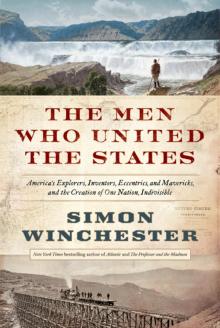 The Men Who United the States: America's Explorers
The Men Who United the States: America's Explorers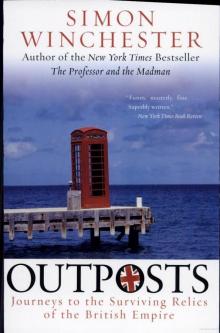 Outposts: Journeys to the Surviving Relics of the British Empire
Outposts: Journeys to the Surviving Relics of the British Empire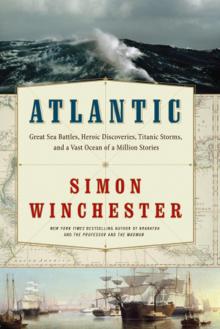 Atlantic: Great Sea Battles, Heroic Discoveries, Titanic Storms
Atlantic: Great Sea Battles, Heroic Discoveries, Titanic Storms The Professor and the Madman: A Tale of Murder, Insanity
The Professor and the Madman: A Tale of Murder, Insanity A Crack in the Edge of the World
A Crack in the Edge of the World The Perfectionists: How Precision Engineers Created the Modern World
The Perfectionists: How Precision Engineers Created the Modern World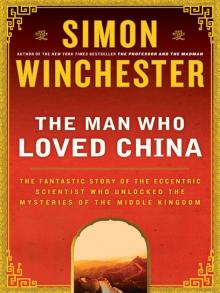 The Man Who Loved China: The Fantastic Story of the Eccentric Scientist
The Man Who Loved China: The Fantastic Story of the Eccentric Scientist The River at the Center of the World: A Journey Up the Yangtze
The River at the Center of the World: A Journey Up the Yangtze The Fracture Zone: My Return to the Balkans
The Fracture Zone: My Return to the Balkans The Map That Changed the World
The Map That Changed the World Krakatoa: The Day the World Exploded
Krakatoa: The Day the World Exploded The Man Who Loved China
The Man Who Loved China The River at the Centre of the World
The River at the Centre of the World Bomb, Book and Compass
Bomb, Book and Compass The Perfectionists
The Perfectionists The Meaning of Everything
The Meaning of Everything Exactly
Exactly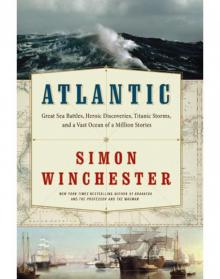 Atlantic
Atlantic Korea
Korea The Fracture Zone
The Fracture Zone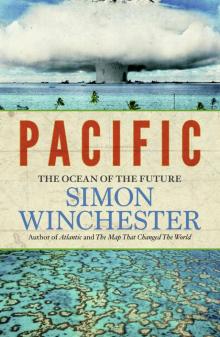 Pacific
Pacific Krakatoa
Krakatoa The Professor and the Madman
The Professor and the Madman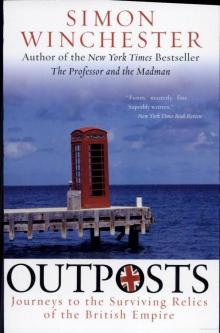 Outposts
Outposts